According to a 2017 survey of B2B marketers, the most successful B2B marketers spend 40 percent of their overall marketing budget on content marketing alone. Content marketing—a form of marketing that deals with the creation and sharing of online material that is meant to drive interest in a brand rather than actively promote—is an important tool in any digital marketing strategy. It is estimated that by 2019, content marketing revenue will exceed $300 billion.
In spite of this, not all businesses have the right content marketing plan in place. 70 percent of marketers do not have a consistent or integrated content strategy in place. According to marketers, some of the biggest challenges with content marketing are:
- Generating traffic and leads
- Measuring and analyzing marketing impact
- Being able to consistently create engaging, well-designed visual content
But with 70 percent of internet users stating that they’d prefer to learn about products and services rather than traditional advertisements, it’s clear that content marketing is an effective way to reach your audience. We previously cleared up some of the most common myths about content marketing, and now we’d like to share with you our tips for an effective content strategy.
Know Your Audience
Most businesses have at least a general idea of who they’re trying to pitch their content to. It’s not enough to decide that you want to promote your business to adult individuals or businesses within a certain industry; you should have a deep understanding of the type of person who would find your content useful. Think about:
- What their needs are
- How they engage with content
- What their web browsing and purchasing habits are like
- What they’re expecting to receive from your products and services
- Where they spend their time online
- Their demographic (age, education level, income level, political leanings, hobbies)
- What would cause them to purchase a product or want to learn more (or conversely, what would turn them off of your products and services)
You don’t need to have just one audience persona. You can develop as many as you like, in order to reflect all of the people that you think would be interested in or benefit from your products and services. A comprehensive audience persona is the starting point of any content strategy. It lets you know what kind of content you should create, how often you should create it, how you should promote it, and what you should expect from it.
Have a Purpose
There are different phases within the content marketing funnel, and different types of content will help you to accomplish different things. These phases are:
- Outreach
- Conversion
- Closing
- Retention
You may have one overarching goal—to gain more customers, to bring in more income, to grow your business—but you should also set smaller goals for your content. Maybe you’re looking to expand your influence within one area of your industry. Maybe you’re looking to attract a new demographic. Maybe you want to establish authority. Regardless of what the purpose is, every piece of content should be created with a goal in mind.
In addition to your goals, think about what your audience is looking to achieve by consuming your content. Do they have a problem that needs solving? Do they want to learn more about something important (say, why they should have a Builder’s Risk insurance policy)? Knowing what your audience needs is the best way to create content that will appeal to them.
Create a Documented Plan
Once you know what you’re trying to achieve, it’s time to plan out how you’re going to accomplish it. Your strategy should be well-documented and outline everything: what you’re going to create, what purpose it serves, what your goals are, how you’re going to promote your content and your business, how your content is going to develop over time, what resources you’re going to use to aid in your content strategy, how long you expect it to take to achieve your goals, and more. No detail is too small to include.
Once you’ve created your strategy, you should designate a time to reassess it. Maybe rethink your strategy once each year, with examinations if you and your team feel that it isn’t working out.
Establish Your Tracking Criteria
You’re more likely to accomplish your goals if you set concrete, measurable deadlines. Rather than saying “We want to increase our revenue”, say, “We want to increase our revenue by (X Dollar Amount).” Instead of saying, “We want to get our name out there”, set specific metrics for how you’d like your click rates, conversions, and sales to increase. These metrics are referred to as “key performance indicators”, or KPIs.
Think about how you will measure your success, as well. This may require certain tools, like Google Analytics.
The Takeaway
Content marketing is a crucial piece of any digital marketing strategy, and it is one that cannot be improvised. In order to create effective content and ensure that it reaches the right people, you need to have a solid plan that clearly establishes:
- Who you’re trying to reach;
- What they’re looking for from their content;
- What kind of content would best reach them;
- When and how you’re going to produce this content;
- How you will reach your target audience;
- What you’re hoping to accomplish with your content, and
- How you will measure your success.
About Neilson Marketing Services
Since 1988, Neilson Marketing has been implementing innovative marketing solutions and strategies for our clients in all areas of marketing. Contact us today at (866) 816-1849 to put our talent, expertise, and vast resources to work for you. Let’s make things happen, together.

